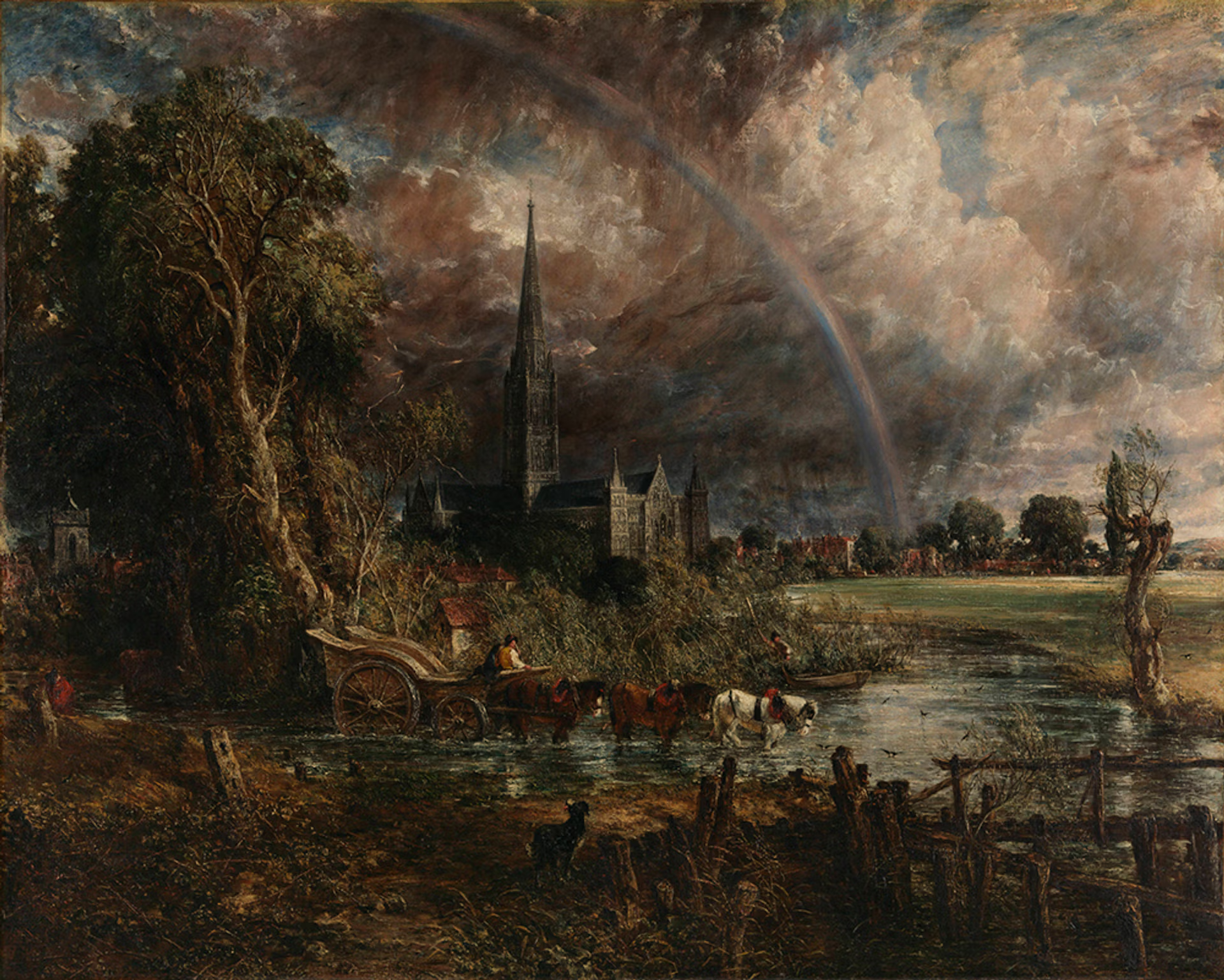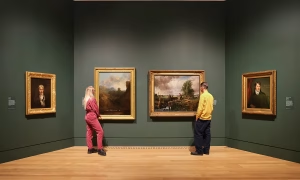It has long been recognised as art historical fact that Turner and Constable were the twin fire starters of Modern art. But where Turner the radical seems so often at the forefront of the national consciousness—celebrated in films, with a museum and a prize named after him, and his very own hall of honour in the wonderful space of Tate Britain’s Clore Gallery—Constable is undercelebrated as an artist, and invisible, through familiarity as much as museum prejudice, as a painter. The only room in the country devoted to his painting, currently, lurks at the far end of the Clore Gallery, only emphasising Turner’s primacy.
There is no permanent gallery honouring Constable in his native arcadia of Dedham Vale; instead it houses a museum (a strange and fascinating place) devoted to the works of the arch anti-Modernist Alfred Munnings. Where Turner gets his portrait and The Fighting Temeraire on the back of the £20 note, Constable gets The Hay Wain on jigsaws.
How that rivalry, or comparison at least, plays out now is the subject of Turner and Constable, opening at Tate Britain today (until 12 April 2026). The difference between the two figures, born a year apart but who sometimes appear from different epochs in art, will be encapsulated by the comparison of Constable’s Salisbury Cathedral from the Meadows (1831), more English than a cup of weak tea in a National Trust cafe, with Turner’s Italianate Caligula’s Palace and Bridge (around 1831), an image of thoroughly un-British fire, ruin and imperial hubris. The hang at Tate Britain recreates their display at the Royal Academy in 1831. “Fire and water” in the words of a contemporary critic, a comment setting the tone for their rivalry to this day.
J.M.W. Turner’s Caligula’s Palace and Bridge (around 1831) Image courtesy of Tate
Sin city vs Salisbury Cathedral
You can see why Turner has taken the top spot. The sin city of Caligula’s palace is always going to beat high-Tory Salisbury cathedral, at least in Bohemian circles. You might also say that Constable had only himself to blame. He was constantly wrong-footing himself throughout his career and shunning the limelight, much to the frustration of his family and supporters. His paintings do not leap forward and illuminate a room, as do those by Turner, or Rubens, as his supporter George Beaumont wrote to him. And yet the famous full-size sketches show an approach to painting even more radical than Turner’s, and one that was to have a far deeper and more lasting effect on Modern painting.
One of my favourite Constable stories arises from his early friendship with a local plumber and handyman, John Dunthorne, whose cottage still stands in East Bergholt, next to the plot once occupied by the grand Constable family home. Dunthorne is said to have encouraged Constable to paint on different canvases at different times of day in the Vale of Dedham to catch the effect of light—Modern art, then, invented by a plumber from East Anglia. It is of course far too neat to be true. Others were painting en plein air before Constable and Dunthorne, and Boudin and Monet would most likely have taken a largely similar course without Constable’s example. And yet the story points to the truth of the matter, which is that before Francis Bacon, Constable was the only English painter to have a meaningful international reputation, a sure place in the history of European painting.
Turner, for all his greatness, and for the remarkable support of John Ruskin, was either still in the shadow of Monet, or too far ahead of his time to have any contemporary purchase. The same remains true for painting nowadays. Constable’s full-size oil study for The Leaping Horse (around 1825), in those quiet upstairs galleries at the Victoria and Albert Museum, is a far greater lodestar for painters now than anything hanging in the Clore Gallery.

Constable’s Salisbury Cathedral from the Meadows (1831) Image courtesy of Tate
Honouring Constable
Which might make us wonder whether it is time for Constable to have his own gallery of honour, if such a thing is even thinkable in museums nowadays. He was, after all, a founding figure of Modern art, and one whose painting goes far deeper than jigsaws and National Trust tea shops. The utterly astonishing and profoundly perplexing recent announcement that the National Gallery is to collect Modern and contemporary art, and build a new wing in which to display it, might seem to raise the opportunity for such a gallery, although we would hope against hope for the greatest of his paintings to be prised from other museums for such a display.
The works of both artists remain nevertheless urgently of our time. If Turner’s great symbol is extreme weather, Constable’s is the turning of the mill, both water and wind, under the midday sun. Where Turner shows the image of a world undergoing climatic breakdown, flood and fire, Constable shows the solution—a world powered by the renewable energy of wind, wave and sun.

